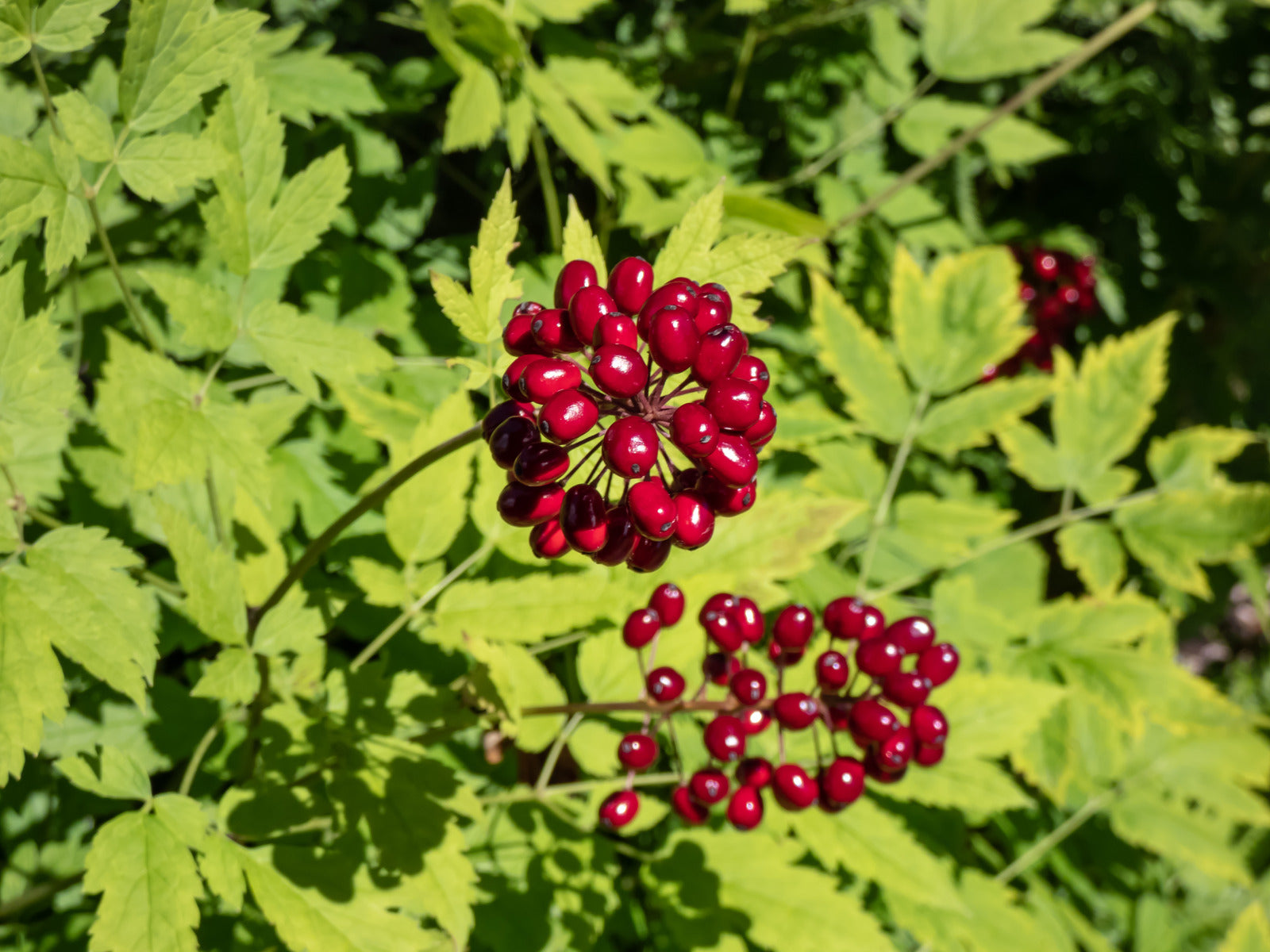ACTAEA RUBRA / RED BANEBERRY
- Regular price
-
$18.95 CAD - Regular price
-
- Sale price
-
$18.95 CAD
Couldn't load pickup availability
Delivery Fees
Delivery Policy
Enjoy FREE delivery on all orders over $149!
For orders between $80 and $149, a $18.99 delivery fee will apply.
Orders under $80 will be prompted to add more items to your cart.
ACTAEA RUBRA / RED BANEBERRY
A Woodland Beauty with Bright Red Berries
Actaea rubra, commonly known as Red Baneberry or Red Doll’s Eyes, is a striking perennial native to North America. Similar to its white-berried cousin (Actaea pachypoda), the Red Baneberry features eye-catching red berries that make it a standout in shaded or woodland gardens. As with other baneberries, it is important to note that all parts of this plant are toxic if ingested.
Why Choose Red Baneberry?
- Vibrant Color: The red berries with black "eyes" give the plant a bold, decorative look, especially in shady areas.
- Shade-Loving: This plant thrives in shaded woodland areas, making it ideal for gardens with low light.
- Seasonal Appeal: The plant offers aesthetic value throughout the growing season, with fragrant white flowers in late spring followed by the striking red berries in late summer and fall.
- Wildlife Value: While toxic to humans and pets, the berries attract certain birds and wildlife.
Key Features:
- Flower Color: Fragrant white flowers in late spring (May to June).
- Berry Color: Bright red berries with black "eyes," appearing in late summer to fall.
- Height and Spread: Typically grows 1–2 feet tall and 1–2 feet wide.
- Hardiness: USDA Zones 3–8.
- Sunlight: Prefers partial to full shade.
- Soil Requirements: Thrives in moist, well-drained, rich, humus-rich soils.
Specifications:
- Plant Size: 1–2 feet tall, 1–2 feet wide.
- Flowering Time: Late spring (May to June).
- Fruit: Red berries with black "eyes," appearing in late summer to fall.
- Hardiness: USDA Zones 3–8.
- Soil: Prefers moist, well-drained, rich, humus-rich soils.
Ideal Uses:
- Woodland Gardens: Perfect for shady, woodland settings where its vibrant red berries provide color and interest in the understory.
- Naturalized Areas: Ideal for planting in areas designed to look like natural woodland habitats.
- Wildlife Gardens: Attracts birds that feed on the berries, but be cautious due to the plant's toxicity.
- Specimen Planting: A unique, attention-grabbing plant for the garden, ideal for shady spots where other plants may struggle.
Though beautiful, Red Baneberry should be handled with care, especially around children and pets, due to its toxicity. However, it thrives in shaded environments, bringing seasonal beauty to woodland gardens or areas with similar conditions.

Care Instructions
Different plants have different watering needs. Check the soil moisture by inserting your finger about an inch into the soil. If it feels dry, water the plant until the water drains from the bottom of the pot. Avoid overwatering, as it can lead to root rot.


ACTAEA RUBRA / RED BANEBERRY
- Regular price
-
$18.95 CAD - Regular price
-
- Sale price
-
$18.95 CAD


